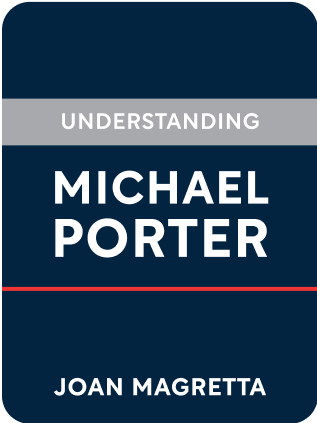

This article is an excerpt from the Shortform summary of "Understanding Michael Porter" by Joan Magretta. Shortform has the world's best summaries of books you should be reading.
Like this article? Sign up for a free trial here .
What is the threat of new entrants? What does it mean for your business?
The threat of new entrants is the possibility of new, direct competitors to your business. As one of the five forces, the threat of new entrants is a critical concern for many businesses, especially in fast-changing industries.
What is the Threat of New Entrants?
What is the threat of new entrants? The last of Porter’s five forces, the threat of new entry is one that businesses worry about consistently; that another similar business will come and take your customers.
What this is:
- New competitors, either upstarts or incumbents from other industries
- An industry can be attractive to incumbents, while being unattractive to new entrants because of entry barriers
What it does:
- Lowers prices, since higher prices attract newcomers to arrive and take profits
- Increases costs, since incumbents have to raise entry barriers
Scenarios in your advantage:
- Economies of scale
- This can take multiple forms: spreading fixed costs over large volume, bargaining power over suppliers, more efficient technologies at scale
- Large starting capital investment
- Proprietary information or IP
- Regulation
- Network effects of your product
- Branding, customer reputation as the “safe choice”
- High switching costs to alternative
- Existing relationships in the value chain (eg distribution partners)
- Retaliation against new entrants by incumbents
- This is stronger in industries with low growth or high fixed costs
Steps in Industry Analysis: What Do New Entrants Have to do With Your Business?
How does the threat of new entrants work in the five forces industry analysis? The Five Forces are used to study the profitability of any industry. Michael Porter outlines the process on how to apply them to analyze an industry.
1. Define the industry by its product scope and geographic scope.
- Rule of thumb: Where there are large differences in forces, you are likely dealing with distinct industries. Each industry will need its own strategy.
- Product scope
- Motor oil used in consumer cars is different from those used in trucks. The latter involve corporate buyers and use different selling channels.
- Geographic scope: global, national, regional
- Buyers may be very different across geographies, even with the same product.
2. Identify the players comprising each of the Five Forces. Segment them into groups.
3. Understand the drivers of each force. Which are strong? Which are weak? Why?
4. Step back and understand the industry as a whole.
- Which forces determine profitability? Rarely are all five forces equally balanced.
- Where are the more profitable companies positioned in relation to the Five Forces?
- How do your results measure up to the industry’s level of profitability?
5. Study recent changes and predict future changes for each force.
- How are the forces trending?
- How can your competitors influence industry structure and shift the Five Forces?
- Each of your Five Forces is its own industry. Within each industry represented by a force, how will competitors or new entrants change that industry’s structure? (For example, your substitute’s industry may face increased competition from incumbent rivalry.)
6. Where will you position yourself relative to the Five Forces? Where the forces are weakest? Where change will open new opportunities? Can you reshape the industry structure?
The point of Five Forces isn’t just to declare an industry attractive or unattractive; it’s also to gain insight about where industry profitability is and how it will change.
Practically for you, it also helps you understand your performance relative to the industry, and how you should overcome forces to capture more of the value you create.
Analogy: good strategies are shelters in a storm. Five Forces analysis forecasts the weather.
Points About Industry Structure
Industry structure is surprisingly stable over time, even with the introduction of new products and new technologies. New products are introduced and companies come and go, but the overall profitability of an industry changes relatively slowly. Some businesses consider the industry structure when considering the threat of new entry, since in slower industries, the threat of new entry is less likely.
The same company can require different strategies in different markets.
- In the US cement industry, large powerful buyers bargain for low prices. In Mexico, the majority of revenues come from small individual customers, served by large producers.
Leaders in an industry can shape the industry by leading competition away from price.
- For example, Sysco moved the basis of competition for food suppliers away from price and toward useful services, like private label to neutralize suppliers. They provided services like inventory management and nutrition planning. This shifted competition away from price alone, and the industry became more attractive.

———End of Preview———
Like what you just read? Read the rest of the world's best summary of Joan Magretta's "Understanding Michael Porter" at Shortform .
Here's what you'll find in our full Understanding Michael Porter summary :
- How Porter's famous Five Forces help you analyze every industry
- How IKEA, Southwest Airlines, and Zara have ironclad, defensible strategies
- Why the best companies reject opportunities to focus on what they know






